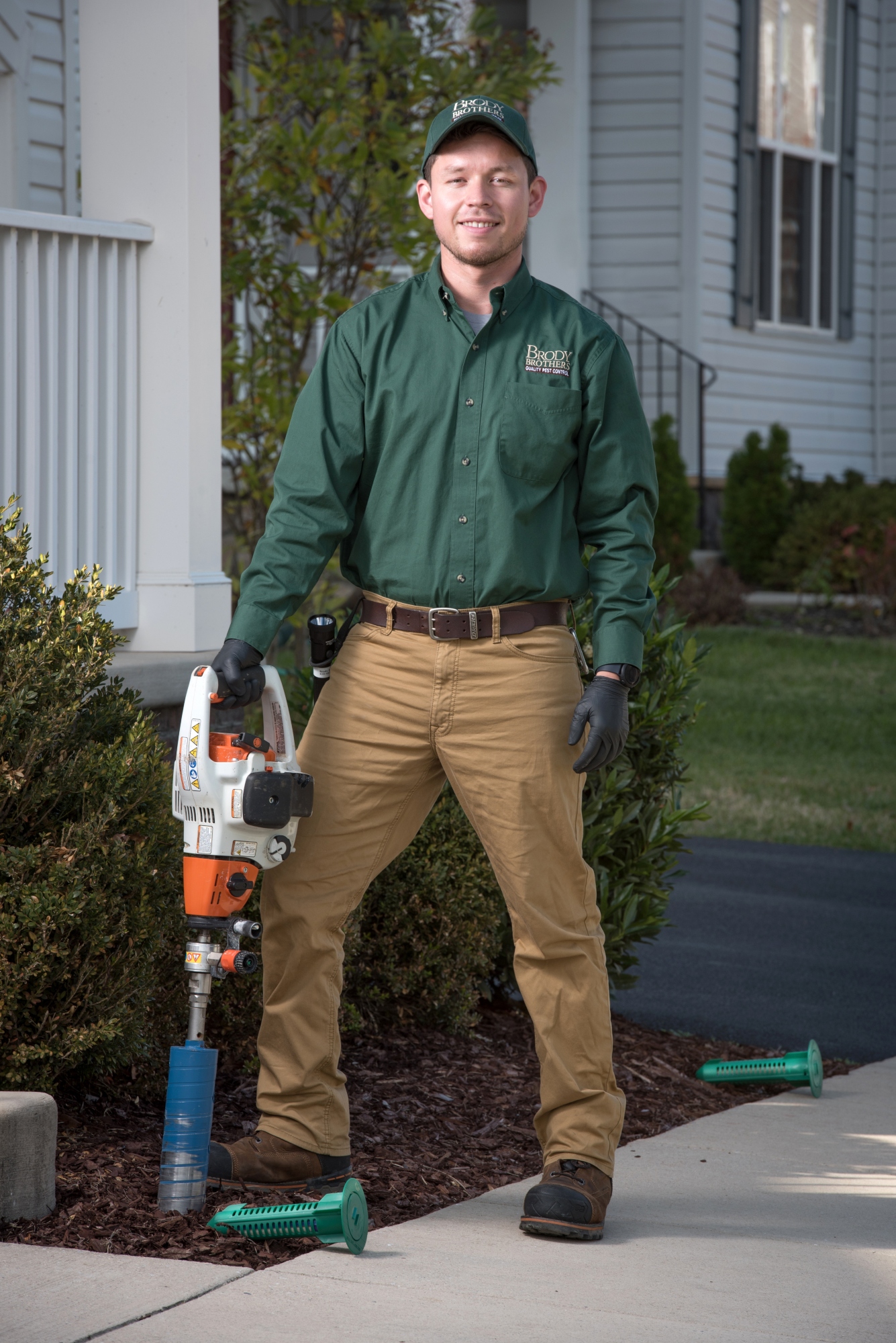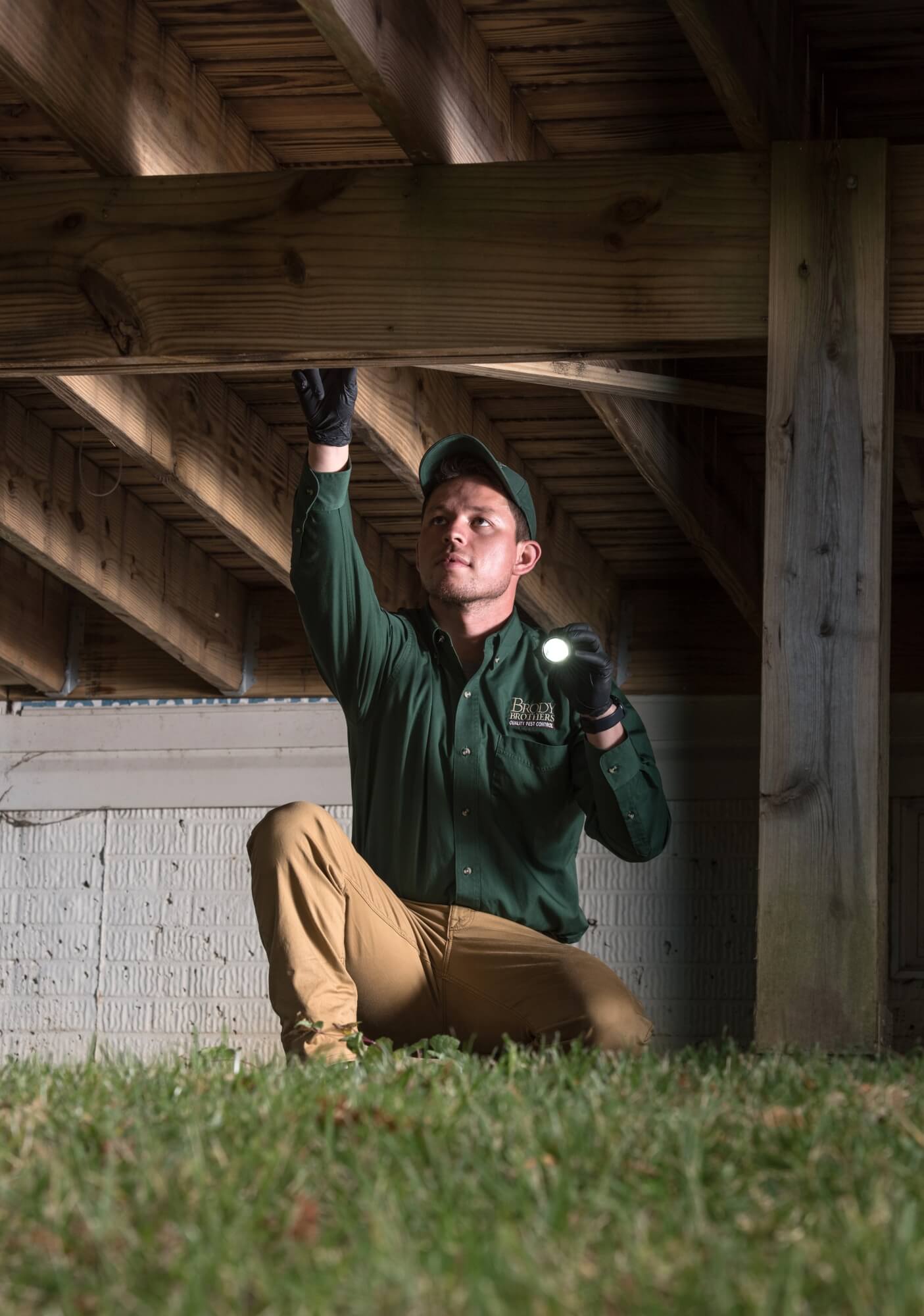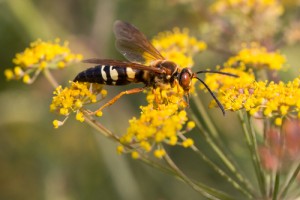The size of the cicada killer wasps can be intimidating; at ½ inch to 2 inches long, they are one of the biggest wasp varieties in the U.S. But these wasps are generally peaceful and will not sting unless roughly handled.
You can recognize a cicada wasp by looking for:
- Hairy, reddish and black areas on the mid part of the body
- Black to reddish brown color and yellowish stripes on its rear segments
- Brownish wings
- Very large jaws
The coloration of cicada killer wasps makes them easy to confuse with yellow jackets or hornets.


The female cicada killer wasp creates nesting space in the ground, preferring well-drained sandy soils and loose clay. But you may also find nests in planters, window boxes and flower beds, especially when they are located in sunny areas. Several females may share a burrow, with each creating its own nesting area off the main tunnel. Using their jaws to dislodge the dirt and their hind feet to push it out, the females can dig burrows 10 to 20 inches deep.
Cicadas serve as food for the larvae. The female:
- Stings the cicada to paralyze it
- Carries the cicada back to the nest by dragging, gliding or flying
- Lays its eggs on cicada carcass
When the larvae hatch, they feed off the dead cicada.
Males cannot sting, but spend most of their time defending their territory before mating with the females. No adult cicada killers live through the winter. The young wasps remain in larval form during the winter, then pupate and emerge in the spring.

As a Home Protection Plan customer, if you’re not satisfied with our pest control service, we will service your home at no additional cost until your issue is solved or receive your money back from your last scheduled service.

The cicada killers are not usually threatening to humans; if you leave them alone, they will leave you alone. But if they have created a nest in an area where it cannot remain, you can remove them with insecticides. If that’s a chore you’d rather not handle on your own, give Brody Brothers a call at 410-653-2121 and we’ll clear the wasps out safely.


